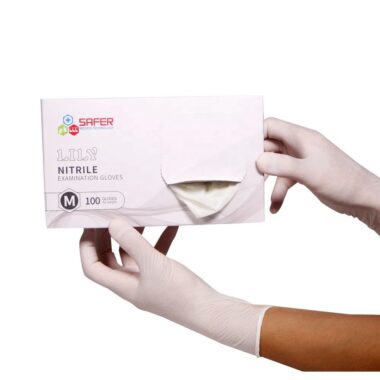Introduction: Choosing the Right Disposable Gloves
For distributors and wholesale buyers, selecting the right disposable gloves can directly impact business growth. While nitrile gloves dominate in healthcare and industrial sectors, vinyl gloves continue to be popular in food service and retail. Understanding the pros and cons of each helps distributors build a balanced product portfolio that satisfies diverse customer demands.
Vinyl Gloves: Cost-Effective and Practical
Vinyl gloves are made from polyvinyl chloride (PVC), making them an affordable option for businesses that prioritize cost efficiency. Their main advantages include:
-
✔ Affordability – Vinyl gloves are significantly cheaper than nitrile.
-
✔ Food Safe – Commonly used in food prep and service environments.
-
✔ Latex-Free – No risk of latex allergies for wearers.
However, vinyl gloves have limitations. They are less durable and offer weaker protection against chemicals, punctures, and pathogens. For this reason, they are best suited for short-term, low-risk tasks. Many buyers source them from trusted Vinyl Gloves manufacturers to meet retail and food service demand.
Nitrile Gloves: Durable and High-Performance
Nitrile gloves are made from synthetic rubber and have become the gold standard in industries that require strength and reliability. Key benefits include:
-
✔ Superior Resistance – Strong protection against punctures and chemicals.
-
✔ Long-Lasting – Suitable for extended wear in medical and industrial environments.
-
✔ Professional Appearance – Available in multiple colors, including blue and black, to suit specific industries like healthcare or tattoo services.
The downside is cost: nitrile gloves are generally more expensive. Still, many distributors partner with a reliable Nitrile Gloves supplier to ensure steady stock and consistent quality for healthcare, laboratories, and industrial clients.
Distributor Considerations: Balancing Supply and Demand
For distributors, the best strategy often lies in offering both vinyl and nitrile gloves. Vinyl gloves satisfy cost-conscious buyers, while nitrile gloves address the needs of medical and industrial clients who prioritize safety.
Other considerations include:
-
Market Regulations – Some countries restrict vinyl gloves for medical use.
-
Customer Segments – Retail and food buyers lean toward vinyl, while hospitals prefer nitrile.
-
Pricing Strategies – Combining high-margin nitrile sales with volume-based vinyl sales creates balance.
Global Market Trends
The global glove market shows sustained growth in both categories. Nitrile gloves are gaining momentum due to safety regulations, while vinyl gloves remain attractive in food service because of their low cost. For distributors, offering both ensures resilience against market shifts.
Conclusion: Two Gloves, One Strategy
When it comes to vinyl vs. nitrile gloves, the right choice depends on the customer base. Distributors who carry both can meet the needs of cost-sensitive buyers while also supporting industries that demand high protection. By partnering with trusted manufacturers and suppliers, distributors secure quality products and strengthen their competitive edge in the global market.















